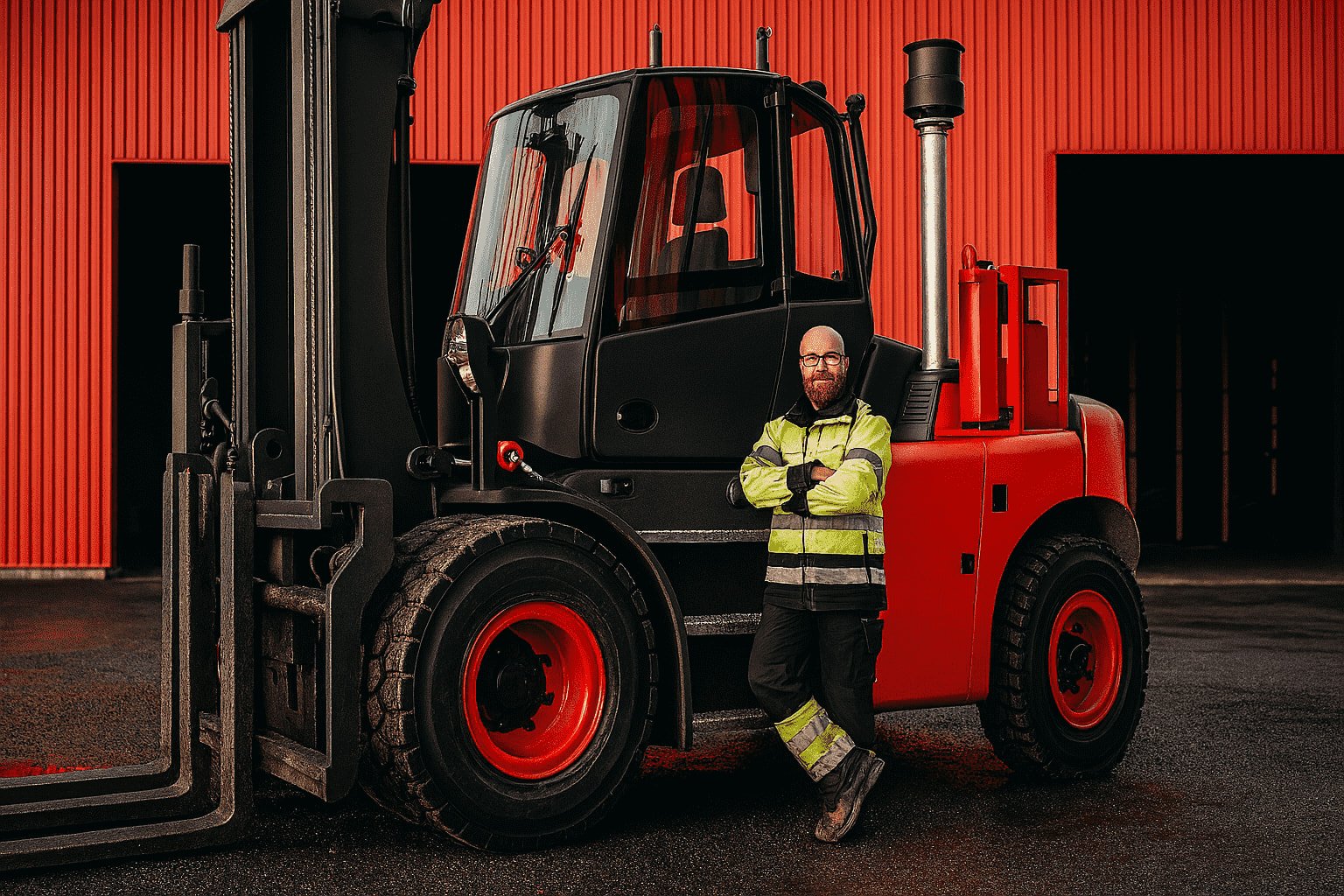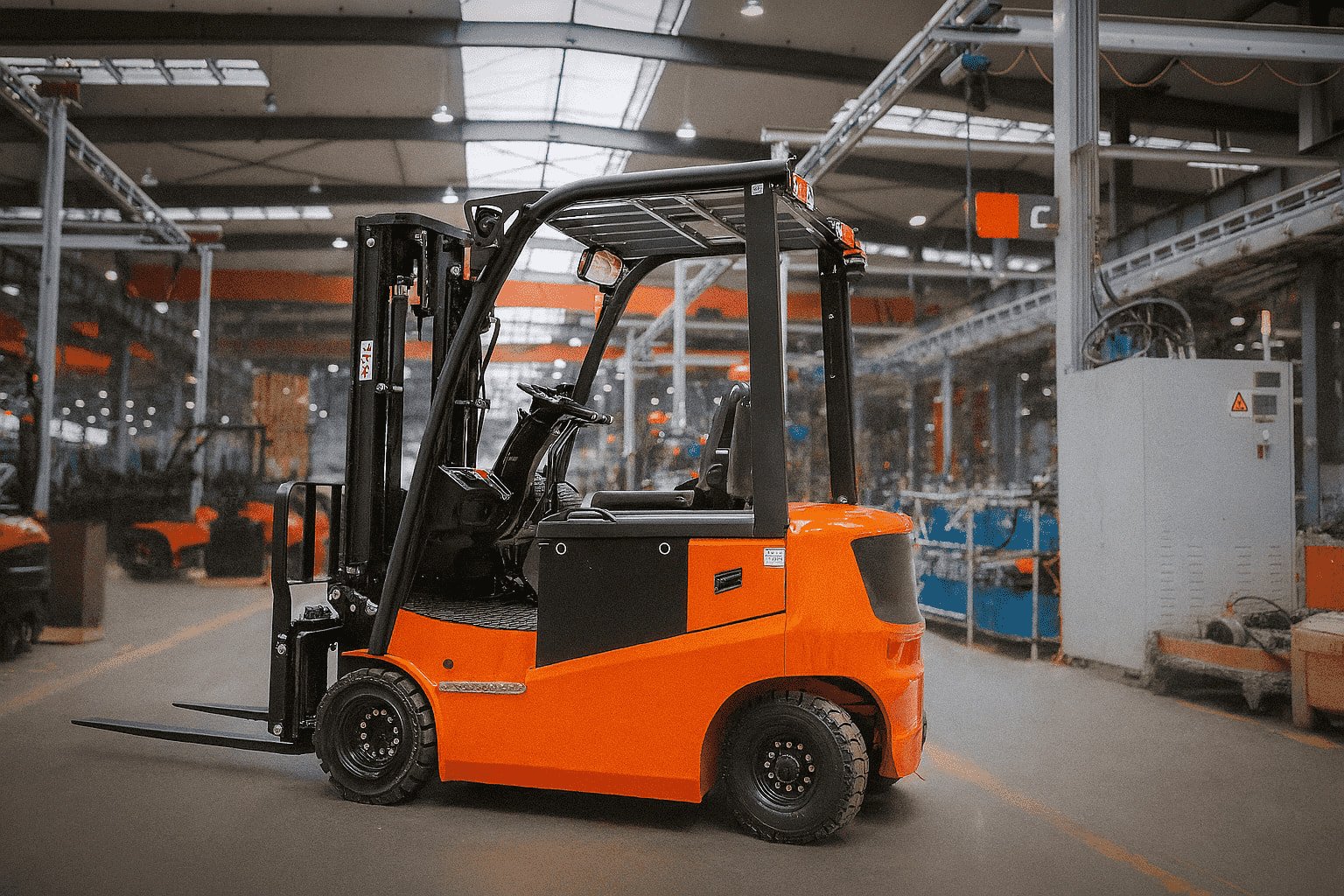What is a Forklift?
A forklift is a powerful industrial truck used to lift and move materials over short distances. It is essential in warehouses, distribution centers, and manufacturing facilities for efficient material handling.
Key Components of a Forklift
- Mast: Vertical assembly that does the lifting and lowering.
- Forks: Horizontal prongs used to lift loads.
- Carriage: Moves the forks up and down the mast.
- Counterweight: Provides balance to prevent tipping.
- Power Source: Typically either electric or internal combustion engine.
Types of Forklifts
- Counterbalance Forklifts: Common in warehouses, balanced by a weight at the rear.
- Reach Trucks: Ideal for narrow aisles, extends to reach high shelves.
- Pallet Jacks: Manual or electric, used for moving pallets over short distances.
Safety Considerations
- Load Limits: Respect the maximum load capacity.
- Operator Training: Mandatory certification for safe operation.
- Maintenance: Regular checks to ensure optimal performance.
Understanding the basics of forklifts helps ensure efficient and safe material handling in various industrial environments.
What Are Forklifts Used For?
Forklifts are primarily used for lifting, moving, and transporting heavy materials over short distances. They are crucial in various industries such as warehousing, manufacturing, and construction.
Forklifts serve several specific purposes:
- Loading and Unloading: Essential for loading and unloading goods from trucks and delivery vehicles.
- Stacking: Used to stack materials in warehouses and storage facilities, optimizing space.
- Transporting: Effective for moving heavy items across short distances within a facility.
- Order Picking: Helpful in retrieving items from shelves for order fulfillment.
- Heavy Lifting: Capable of lifting large and heavy items that would be difficult to move manually.
With their versatility and efficiency, forklifts improve productivity and safety in environments where heavy lifting and material handling are required.
What are the different types of forklifts?
There are several types of forklifts, each designed for specific tasks and environments. The main types include counterbalance forklifts, reach trucks, pallet jacks, order pickers, and rough terrain forklifts.
Key Types of Forklifts
- Counterbalance Forklifts:
- Most common type.
- Features a weight at the back to balance the load at the front.
- Ideal for indoor and outdoor use.
- Reach Trucks:
- Designed for narrow aisles and high racking systems.
- Extendable forks to reach deep into racks.
- Pallet Jacks:
- Manual or powered.
- Used for moving pallets over short distances.
- Compact and easy to maneuver in tight spaces.
- Order Pickers:
- Operator lifts with the load.
- Suitable for picking individual items from high racks.
- Rough Terrain Forklifts:
- Designed for uneven surfaces.
- Larger, more robust tires for stability on rough grounds.
Different forklifts cater to diverse operational needs, ensuring efficiency and safety in material handling.
How to Get Forklift Certified
To get forklift certified, you need to complete a forklift training program accredited by OSHA (Occupational Safety and Health Administration), which includes both classroom instruction and hands-on training. After completing the training, you must pass a written exam and a practical skills test.

Steps to Get Forklift Certified:
- Enroll in an OSHA-approved Training Program: Look for local courses or online programs that offer OSHA-compliant forklift training.
- Complete Classroom Instruction: Learn the theoretical aspects of forklift operation, including safety protocols, equipment maintenance, and operational guidelines.
- Practical Training: Gain hands-on experience by operating a forklift under supervision, focusing on maneuvering, loading, and unloading.
- Pass the Written Exam: Demonstrate your understanding of the theoretical knowledge through a formal test.
- Pass the Practical Skills Test: Show your competency in operating a forklift safely and efficiently in a controlled environment.
Successfully completing these steps will earn you a forklift certification, enabling you to operate forklifts in compliance with OSHA standards.
Tow Motor vs Forklift – Is There A Difference?
Yes, there is a difference between a tow motor and a forklift. A tow motor is an older term often used to describe what we now commonly call a forklift. While some people use the terms interchangeably, “tow motor” specifically refers to the original brand of forklifts manufactured by Towmotor Corporation.

Key Differences and Similarities:
- Terminology:
- Tow Motor: Originally a brand name.
- Forklift: Generic term for the vehicle.
- Functionality:
- Both are used for lifting and moving heavy materials.
- Modern forklifts have advanced features and better safety standards.
- Technological Evolution:
- Tow motors were the early versions.
- Forklifts now come with improved design and technology.
In essence, while “tow motor” can sometimes be colloquially used to refer to forklifts, forklifts represent the evolved, modern machines used in industries today.
What is the difference between a forklift and a truck?
A forklift is a small industrial vehicle with a power-operated pronged platform that can be raised and lowered to lift and move materials short distances. In contrast, a truck is a larger vehicle designed primarily for transporting goods over longer distances on roads.

Key Differences:
- Purpose:
- Forklift: Used for lifting, moving, and placing materials within warehouses, factories, and storage facilities.
- Truck: Used for transporting goods over long distances on highways and roads.
- Design:
- Forklift: Compact design with a lifting mechanism (forks or prongs) in front.
- Truck: Larger size with a cargo area for transporting goods.
- Operation Area:
- Forklift: Operates primarily indoors or in confined outdoor spaces.
- Truck: Operates mainly on public roads and highways.
- Capacity:
- Forklift: Limited to lifting heavy loads over short distances.
- Truck: Designed to carry large volumes of goods over long distances.
Understanding these differences helps in choosing the right vehicle for specific logistical needs.

